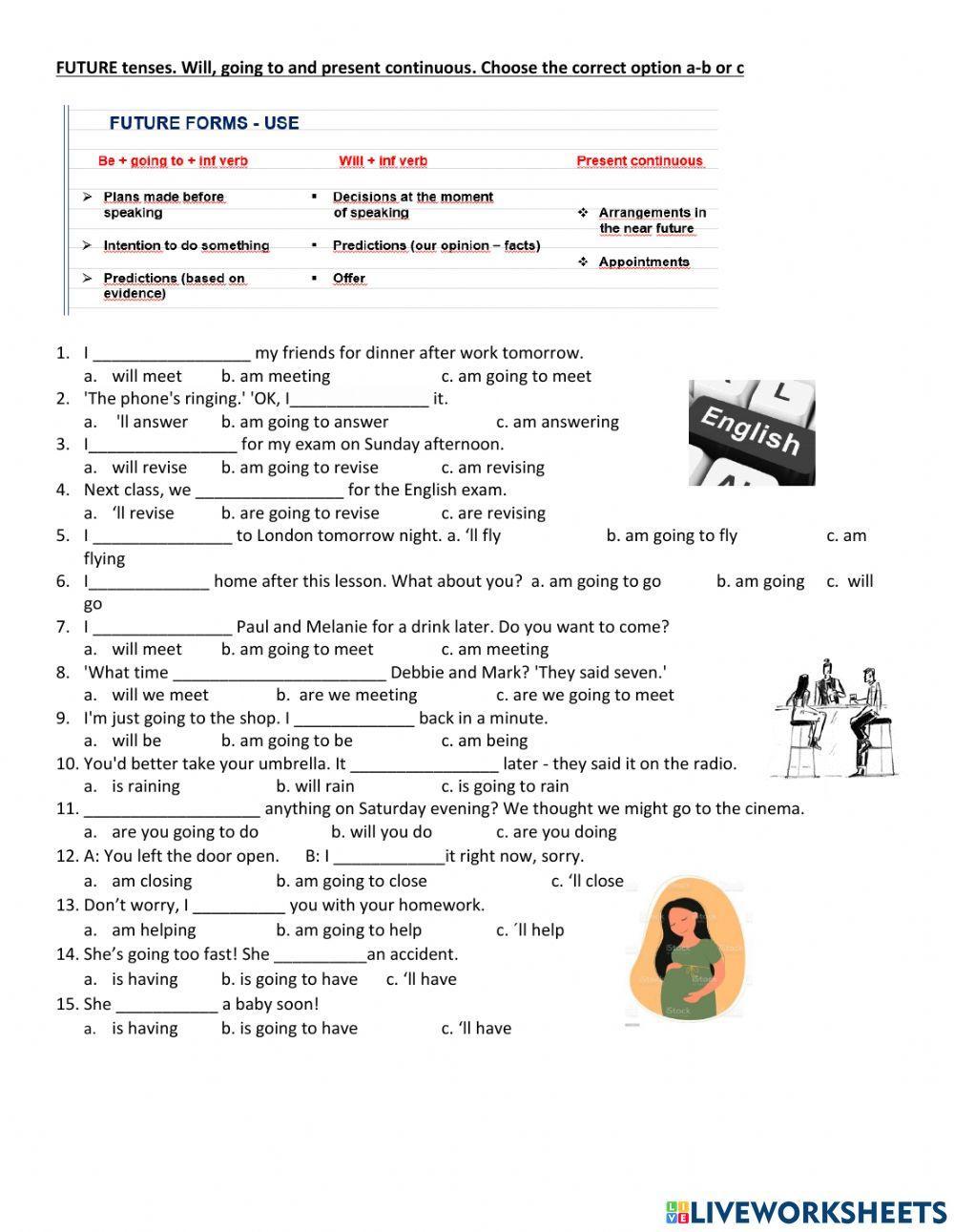Created by

silvianeider
-
English as a Second Language (ESL)
-
Verb tenses
-
Age 12+
-
level: pre interm
-
English
Author's Instructions
Students practsi when to use will, going to or present continuous.
Created by

silvianeider
-
English as a Second Language (ESL)
-
Verb tenses
-
Age 12+
-
level: pre interm
-
English
Author's Instructions
Students practsi when to use will, going to or present continuous.












